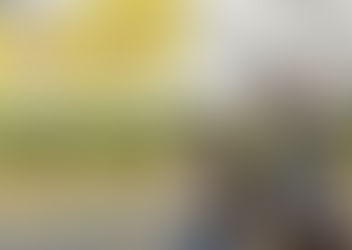When we slow down, we see amazing things at The Pollination Place
- Pollinator Project RV

- Mar 28, 2022
- 6 min read
Updated: Mar 28, 2022
By Cindy Harper, PPRV volunteer
As a longtime volunteer and supporter of Pollinator Project Rogue Valley, I've had the pleasure of helping create the Pollinator Count Project.
Native plants were first installed on this site in early 2020, and since then, with just a little watering to get established, and in spite of the fire and high summer heat, the plants have been thriving! These aren’t just any plants. By definition native plants are adapted to where they live. So they are adapted to our hot dry summers and mild winters. And, since our native pollinators evolved with them over millions of years, they often serve the native pollinators best, especially the caterpillars of butterflies and moths that are not able to eat non-native plants.
As part of our pollinator counts, I had the opportunity to work with two other volunteers, Karin Wares and Eva Theimann. The three of us, with Kristina Lefever, all learned together. Although it doesn’t take much experience to understand this fairly simple process, I decided to ask Karin and Eva what they thought of our counts and what they learned.

Karin, Cindy, and Eva, counting in 2021, photo by K. Lefever
Here’s what Karin had to say:
Cindy (CH): What made you decide to get involved in the pollinator counts at the Pollination Place?
Karin (KW): I wanted to extend my energies a little beyond my own gardens. I started doing the counts at PPRV because I wanted to support the efforts being made locally to focus on and support pollinators. I’ve been aware of their plight and concerned about the threat to these amazing little creatures.
CH: What involvement have you had with pollinators in the past?
KW: Since painting our endemic Franklin's Bumblebee for Oregon Department of Fish and Wildlife’s habitat conservation project I found myself having more exposure to what’s going on locally in this realm and began getting more acquainted with Pollinator Project Rogue Valley.
CH: How difficult is it exactly to count pollinators?
KW: We use a science based procedure to document their presence methodically, using the Pollinator Monitoring Data Sheet, which is adapted from a data collection document created by the Xerces Society.

On this form, we record information about current conditions–temperature, percentage of cloud cover and wind speed. Ideal conditions for pollinators include clear to partly cloudy skies, temperature above 60 degrees but not too hot, and minimal winds.
The garden in front of The Pollination Place is 100 feet by 6 feet. Generally 2 people will perform the observations, and another volunteer will record their findings on the data sheet. Someone also takes pictures of the pollinators and their plants. Two surveys lasting 7.5 minutes each are conducted moving from north to south, first on the upper part of the garden then the lower, so as not to cast a shadow, which can frighten the insects off the flowers, making them hard to follow. We try not to count the same insect twice, because we want to count the total number of insects. This is one reason to have more than one observer.
The procedure is regimented because it is important to be able to repeat the exercise exactly the same way each time it is carried out. In doing so we are able to accurately compare the findings from month to month and year to year. Anytime there are plants in flower, a count can be carried out. In 2021, we have counted April through September.
With the chart and a little familiarity with the plants and the insects, it’s something that can be done easily. Along with photo documentation, it’s a contribution to “citizen science” which has become such a boon in these times regarding the tracking and documentation of threatened species of many kinds. (Here is our Pollinator Count album of some of the photos we've collected.)

Eva is ready to take a photo, 2021
CH: What do you enjoy about counting the pollinators?
KW: I love the community engagement of sharing our nerdy excitement over spotting different species and identification. It’s a fun way to get out and connect with like minded people and learn more about the kinds of pollinators in our Valley.
CH: Do you have a favorite insect pollinator?
KW: I think my favorite insect pollinators are the native bees because of their astonishing diversity and varied specializations. For example, bumble bees have either short, medium or long tongues. It is the length of the tongue that determines which flowers they can pollinate. And as far as sheer personality and character go, bumblebees and hummingbirds are my delight. 🐝
Eva’s reason for counting pollinators at the Pollination Place was somewhat different.
CH: What made you want to participate in pollination counts?
(Eva) ET: I had learned about the importance of pollinators from the Xerces Society, but I didn’t realize that there could be native bees in the city! So I wanted to see for myself. And also learn something new from knowledgeable people.
CH: What is the process for counting pollinators?
ET: The actual surveying of the insects only lasts 15 minutes, but then you see things that you hadn’t noticed before, and everybody shares what they observed when the process is done. So all in all it takes about an hour.
The results are tabulated and entered into a database. Since the plants are only a couple of years old, we hope as they grow there will be more flowers and shelter for the insects. More habitat, more flowers means more pollinators!
CH: When you count the insects, what do you see?
ET: There are many insects that are pollinators, including butterflies and many different types of bees, not just honeybees. There are so many kinds of native bees that we see: mason bees, metallic sweat bees, bumble bees. I learned about a bee I had never seen before, called a wool carder bee.

There is a plant called Lamb’s Ears that has very soft fuzz on the surface of the leaves. This bee uses the fuzz for her nest!
Two Wool Carder bees, mating! , photo by C. Harper
CH: What seems to happen to the pollinators from month to month?
ET: As different plants come into flower and other flowers die back, this impacts which pollinators we see. That way we can detect the fluctuations in insect numbers, especially year to year, and the variety of insects.
CH: What did you notice when counting the insects?
ET: I noticed that certain insects only pollinate certain plants, because they have a relationship to one another, that is they evolved together, like the monarch caterpillar and milkweed, and the wool carder bee and fuzzy leaved plants. Most people know that milkweed is the only plant monarch caterpillars can eat. So it is important that we provide plants that are native to our area, to support the insects that are also native. Did you know honey bees are not native, but rather are imported from Europe?

CH: Do you have a favorite insect?
ET: All insects are important, so I don’t have a favorite. I spent time in
Alaska and I grew up in Latvia, where mosquitos abound. I learned to think of mosquitos as just part of the scenery!
CH: There are many pollinator gardens in our area. Do you think gardeners and pollinator enthusiasts could count pollinators in their home gardens or at other community gardens?
ET: I don’t see why it couldn’t be used anywhere. Pollinator Counts are an easy and fun project that anyone Grey Hairstreak, photo by E. Theimann
could do in their own yard or anywhere at any time. Because pollinators are active from Spring until Fall, it’s important to have plants that flower throughout the growing season, and even into the winter. There are many great resources for purchasing native plants if you are looking to do some planting this year. Performing pollinator counts takes just a bit of training. What a great excuse to get together with friends and do some citizen science! 🐝
CH: We have enjoyed doing the counts, and talking about the insects and plants we see, and have learned a lot! Oftentimes, even though the count has concluded, our bug-eyes are still ‘on’, and so we often see other things happening in the garden. After one count had ended, I saw a drab bee cruising just above the decomposed granite. It appeared to be a ground nesting digger bee excavating the granite dust to dig a brood chamber to lay her eggs! That was quite exciting for all of us.
Pollinator counts are easy and fun, and anyone can do them in their own yard at any time. If you are interested in learning more about pollinator counts, or helping us develop our Pollinator Count Program, send us an email here. Or stop in at The Pollination Place between noon and 3. We’ll see what we might see on the plants and flowers in our gardens!

Digger or leaf cutter bee excavating a nest in sidewalk crack, photo by C. Harper




























Comments